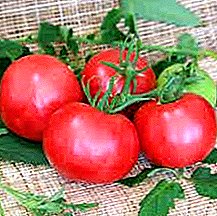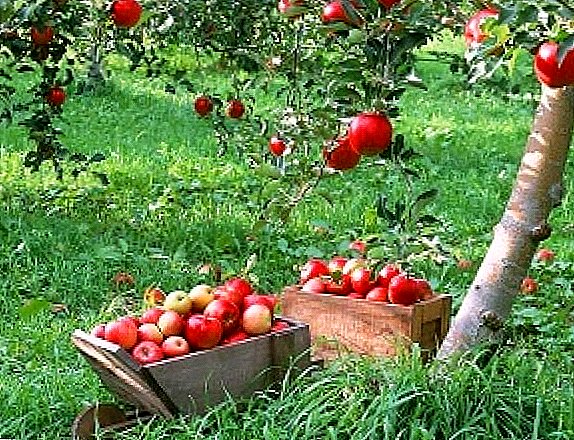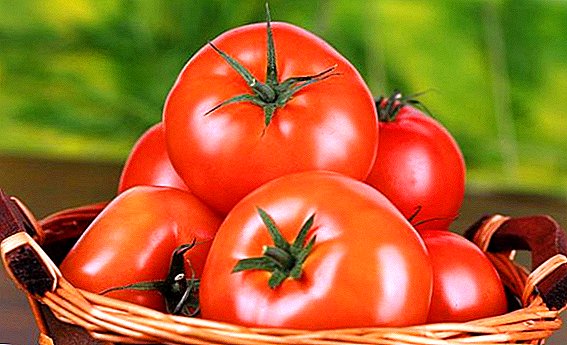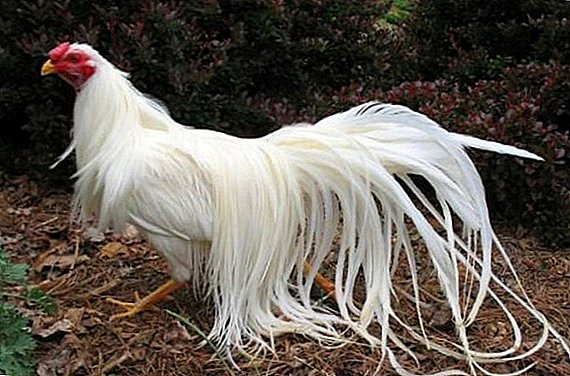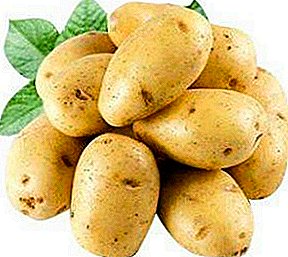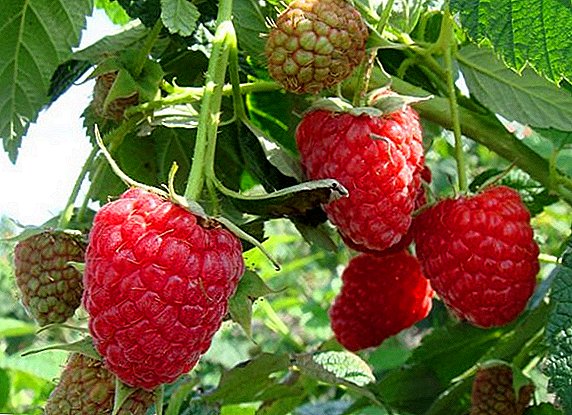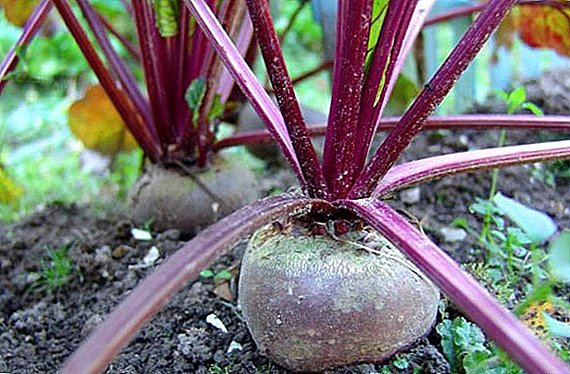 Many inexperienced gardeners believe that the cultivation of beets does not require special knowledge. However, this is not quite the right idea. Growing beets from seedlings involves compliance with certain rules.
Many inexperienced gardeners believe that the cultivation of beets does not require special knowledge. However, this is not quite the right idea. Growing beets from seedlings involves compliance with certain rules.
Beet: Is it possible to plant seedlings
If you plant this root crop from a seedling, then it can be sown as early as April and even at home. The seedling method is remarkable in that it makes it possible to receive the first fruits 3-4 weeks earlier (already in July) than when grown from seeds.  At an early age, this root crop tolerates the transplant quite well and during care it is possible not to thin out the planting, which allows to reduce labor costs.
At an early age, this root crop tolerates the transplant quite well and during care it is possible not to thin out the planting, which allows to reduce labor costs.
Did you know? Rassadny way experts recommend growing early varieties rich in carotene, vitamin C, calcium, magnesium, iron, phosphorus and other useful elements.
Landing time
Many believe that they know when to plant beets on seedlings. However, the first thing that needs to be taken into account is that this root crop is extremely negative about frost. For example, in the middle lane, in the Urals or in Siberia, it will have to be transplanted into open ground no earlier than May. It should be remembered that on the windowsill the seedlings are drawn out, and the yield of future plants decreases. Therefore, it is better to sow seeds for seedlings in April.
If you have a greenhouse or greenhouse, the seed can be planted a month earlier - in March, and on the beds - in late April.
Sowing seeds
By and large, planting beets for seedlings is not such an intricate process. The most important thing is to properly prepare the soil and seeds. 
Preparation of the substrate and the choice of capacity for planting
The soil for sowing can be either ready from the store or prepared by yourself. For the preparation of soil mixtures are used:
- 2 parts peat;
- 1 part of manure (humus);
- 1 part of sod land;
- 0.5 parts of sand;
- compost.
 Before planting the substrate should be etched "Fitosporin", "Vitaros" or "Maxim". This is done to prevent the appearance of various diseases (black leg, fomoz, etc.).
Before planting the substrate should be etched "Fitosporin", "Vitaros" or "Maxim". This is done to prevent the appearance of various diseases (black leg, fomoz, etc.).Capacity for planting can serve as a not too deep wooden container, as well as individual small containers.
Important! Beets are very demanding to heat and do not tolerate frosts, so planting seedlings is more promising.
Preparation of planting material
Before sowing beet seeds for seedlings, they must be prepared.
Approximately 2-3 days before planting, the seed is soaked in warm water, in a weak solution of potassium permanganate or in a solution of growth stimulant. After - washed, dried and planted in the soil.
Landing pattern
Preliminary small grooves are made in the container at a distance of 5 cm.  The prepared material is laid out on a wet substrate at a distance of 3 cm and slightly sprinkled with the same soil (layer - 1-1.5 cm). After that, water the seedlings, cover with plastic wrap and remove the container in a greenhouse or other place.
The prepared material is laid out on a wet substrate at a distance of 3 cm and slightly sprinkled with the same soil (layer - 1-1.5 cm). After that, water the seedlings, cover with plastic wrap and remove the container in a greenhouse or other place.
Care of seedlings
In principle, the care of beet seedlings is no different from the care of seedlings of other cultures. The most important thing is to maintain a constant temperature (+ 18-20 ° C), regularly ventilate the room and moisten the soil.
If the container was shallow and seeding is rare, the pick can be omitted. However, most varieties of this root from one seed produce several shoots. In this case, the seedlings of beets grown at home, must be thinned. Moreover, remote seedlings can be taken for additional planting.  When diving, the same soil is used as when sowing. Only add a tablespoon of nitroammofoski to 5 liters of soil mixture. After diving seedlings watered.
When diving, the same soil is used as when sowing. Only add a tablespoon of nitroammofoski to 5 liters of soil mixture. After diving seedlings watered.
Seedlings preferably fed every 14 days. To do this, you can use the "Fertika", "Weave", "Fortress".
Transplanting seedlings in open ground
When 4 full leaves appear on the seedlings, it can be transplanted into open ground. Moreover, the soil should warm up to +10 ° C.
Important! Seedlings should not outgrow. If the roots of the seedlings abut the bottom of the box, then the future harvest will be the wrong shape.
Choosing a place
For planting beet seedlings in open ground, it is necessary to choose well-lit areas with loose and fertile soil - medium loam, peatlands. Although, if other conditions of care are observed, this root crop can produce good yields even in shaded places.  Experts recommend planting this root crop on the places where they used to plant:
Experts recommend planting this root crop on the places where they used to plant:
- potato;
- bow;
- eggplants;
- cucumbers;
- tomatoes;
- peas.
Process description
For growing beet seedlings, the soil must be drained and constantly receive oxygen. For this, the place where it is planned to plant the root crop should be thoroughly dug, loosened with a rake and add dolomite flour to it. 
Did you know? It is better to plant beets in the drizzle.
The wells must be made in such a depth that the roots do not bend and lie exactly in them. The distance between the seedlings should be 4-5 cm, and the size of the row spacing - 25 cm.
Before planting, the sprouts are placed in a clay solution and the central root is shortened by a third. After planting, sprouts must be watered with a solution of humate.
Important! From the density of planting will depend on the size of the root - the greater the distance, the greater will be the root crop.
After planting the beets for 2-3 days, it is desirable to cover the non-woven material so that it is well rooted. After the sprouts have taken root and the fruit becomes 1.5-2 cm in diameter, the seedlings can be thinned, and by July the area should be mulched.
Care features
By and large, the care of seedlings is reduced to weeding, infrequent loosening and feeding.
Watering
On hot days, before full rooting, seedlings are watered daily. After watering will depend on the weather. Do not re-moisten the root crop - this can lead to scab disease and crop loss.  As a rule, beets are watered as the upper layer dries. An ideal irrigation method is sprinkling. Irrigation rate - 2-3 buckets per 1 square. m. A month before harvesting the root crops, watering is stopped altogether.
As a rule, beets are watered as the upper layer dries. An ideal irrigation method is sprinkling. Irrigation rate - 2-3 buckets per 1 square. m. A month before harvesting the root crops, watering is stopped altogether.
Did you know? If table salt is dissolved in water for irrigation (1 teaspoon per bucket of water), this will increase the sugar content of the beets.
Top dressing
Beetroot loves dressing. Therefore, several times a season the soil is fertilized with such mineral elements:
- superphosphate;
- ammonium nitrate;
- potassium salt.
Soil care
No special care for the soil is required. Most care is reduced to thinning plants and simultaneous weeding, which is done immediately after watering and in cloudy weather.  Loosen the soil to a depth of 4-6 cm to destroy the crust, which prevents the aeration of root crops.
Loosen the soil to a depth of 4-6 cm to destroy the crust, which prevents the aeration of root crops.
Harvest
Harvesting depends on the weather. The most important thing is to remove the root crop before frost.
Harvest in sunny, dry weather. At the same time, the root crop should not be cut with a knife - the wounds do not heal for a long time and the moisture necessary for long-term storage leaves them. Dig this root with a fork, removed from the soil and cleaned from the ground.
Did you know? Yellowed and dried beet leaves suggest that it is time to harvest.
After harvesting, the beets are dried in a shaded place, put in containers with sand and placed in a cool place.
As you can see, the seedling method of beet cultivation is not only simpler than seed, but also allows you to reduce labor costs and get an earlier and healthier crop.



